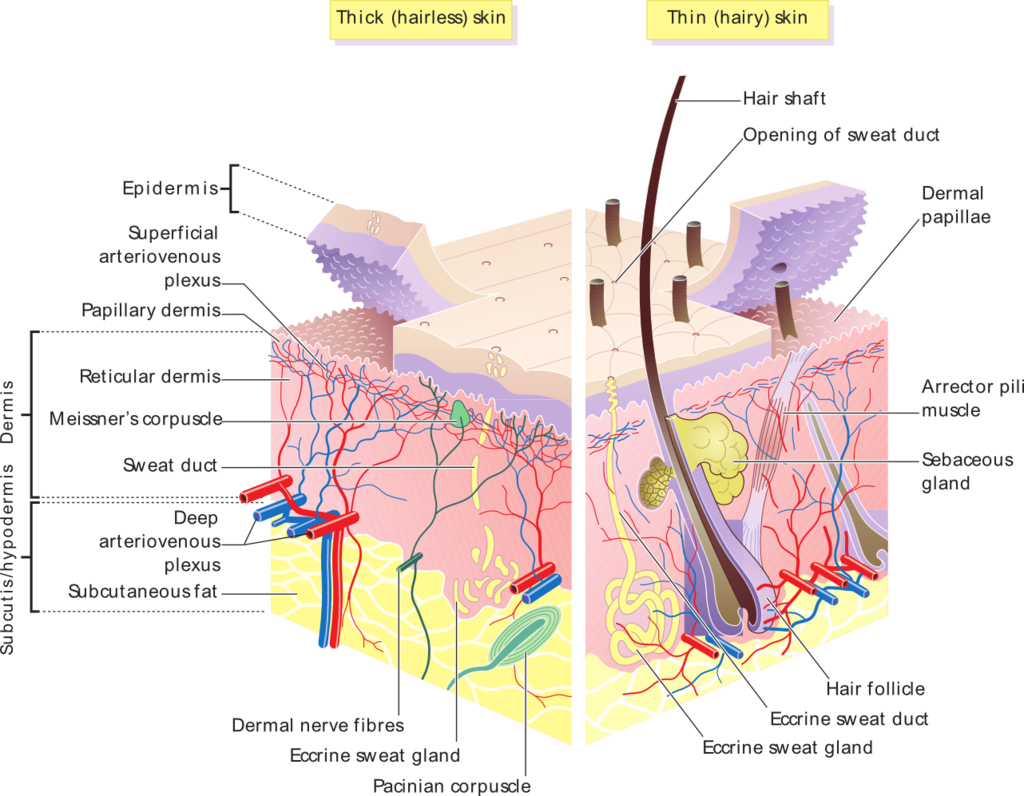The subcutaneous tissue is the deepest and most vital layer of human skin as it is home to fats connective tissue large blood vessels and nerves

The Importance of Subcutaneous Tissue in Human Skin
The human skin is a complex and remarkable organ that protects our bodies from external harmful elements. It consists of several layers, each with its unique characteristics and functions. One of the deepest and most vital layers of the skin is the subcutaneous tissue. This layer, also known as the hypodermis, plays a crucial role in maintaining the overall health and well-being of our skin.
What is Subcutaneous Tissue?
The subcutaneous tissue is located beneath the dermis, the layer that contains sweat glands, hair follicles, and nerve endings. It is composed of a combination of adipose (fat) cells, connective tissues, large blood vessels, and nerves 1^. This layer acts as a protective cushion, providing insulation and shock absorption for the body.
Functions of Subcutaneous Tissue
1. Insulation:
Subcutaneous fat acts as an insulator, helping to regulate body temperature by trapping heat within the body. It plays a significant role in protecting our internal organs from extreme temperatures.
2. Energy Storage:
The layer of fat in the subcutaneous tissue serves as an energy reserve for the body. When we consume excess calories, the body stores them as fat in this layer for future use.
3. Protection:
The subcutaneous tissue provides a protective layer for the underlying structures, such as bones and muscles. It acts as a shock absorber, reducing the risk of injuries from bumps, falls, or impacts.
Vascularization and Nerve Supply
The subcutaneous tissue contains a network of large blood vessels that supply nutrients and oxygen to the skin and the underlying tissues. These blood vessels play a crucial role in maintaining the health and vitality of our skin, ensuring proper cell function and repair. Additionally, the subcutaneous tissue houses numerous nerves that enable us to sense temperature, pain, and touch.
The Impact of Subcutaneous Tissue
Subcutaneous tissue can have a significant impact on our appearance, well-being, and overall health. Excessive subcutaneous fat can lead to obesity-related health issues, while insufficient subcutaneous fat can result in a lack of insulation, making the body more susceptible to temperature fluctuations.
Maintaining a healthy balance of subcutaneous tissue is essential for optimum health. A well-balanced diet, regular exercise, and a healthy lifestyle contribute to the maintenance of a healthy subcutaneous layer.
In conclusion, the subcutaneous tissue is a vital and deep layer of human skin. It provides insulation, energy storage, and protection for the body. The presence of large blood vessels and nerves in this layer further emphasizes its importance in maintaining the overall health of our skin. Understanding the significance of subcutaneous tissue helps us appreciate the complex nature of our skin and the importance of caring for it.
Tags
Share
Related Posts
Quick Links
Legal Stuff


:max_bytes(150000):strip_icc()/skin-anatomy-1068880_review-01-9adf9daebac8464eb693274a960bd850.png)
